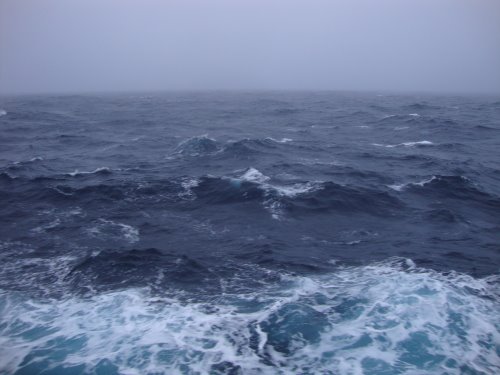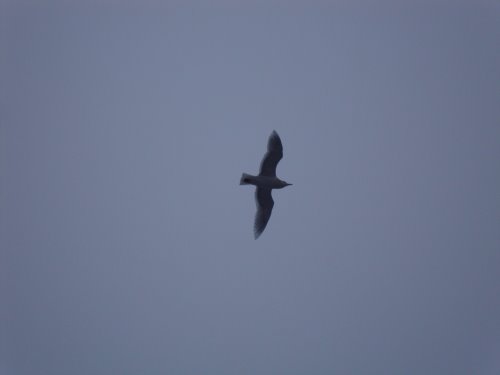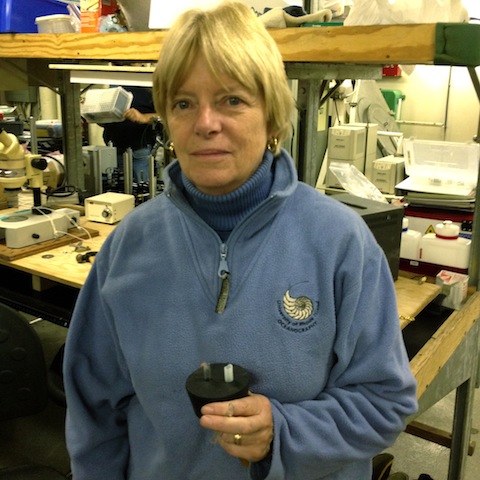Yesterday, I stepped outside to snap some photos of the Bering Sea in action. The humidity was 99%. It felt wet outside; not rainy, yet fog you could feel. We were in Russian waters, sailing with the seas behind us for a gentler ride. We are still headed to MN19 with hopes of conducting science operations. It has been a very slow day for science.

I was pleased to see birds following the ship. With the waves breaking near the ship, Glaucous gulls and Northern fulmar were swooping and flying over...it was a gorgeous sight. Glaucous gulls are the only large gull common in the high Arctic. These gulls are predators and scavengers, often stealing food from other birds. It takes a Glaucous gull 4 years to reach adult plumage. A Northern fulmar looks a little like a gull, but is stockier and has a thicker neck. Their color is variable from white, gray to mostly gray-brown. Northern fulmars breed in high cliffs and they use cliffs more North than any other high Arctic seabird species.

AG1 McLaren gave a Science talk on the National Ice Center. The National Ice Center is a multiagency center whose mission is to provide worldwide operational sea ice analyses and forecasts for government agencies worldwide and the civil sector. In his presentation he explained many of the sea ice products available.
Meet another member of the science team...Donna Van Keuren, Research Technician. Donna grew up in Darien, Connecticut. She received her undergraduate degree from Ohio Wesleyan University in Botany and Bacteriology and her Master's degree from The Ohio State University in Botany. A Research Technician assists scientists in freshwater and marine studies of phytoplankton and zooplankton. She began working at the University of Rhode Island in 1985. Donna's favorite part of her job has been working with PhD level scientists, their graduate students and other tecnicians as part of a research team. This has involved a lot of outdoor work and ship time through the years. This is Donna's third trip on the Healy and her fourth trip to Arctic with Dr. Campbell and Dr. Ashjian.

Donna's advice to students and advice that I LOVE; Spend part of EVERY day outdoors. This will help you understand your connection to the natural world. Be curious, ask question and write down your ideas. If the answers to your questions don't make sense to you, question the answers! Her final words of advice...DON'T BE PLANKTONIC!
Question of the Day
What is meant by the phrase “Don't be planktonic”?
Stay tuned as we continue our exciting voyage on the USCG Cutter Healy. Until then...
“Live as if you were to die tomorrow. Learn as if you were to live forever.” - Mohandas Gandhi


Comments